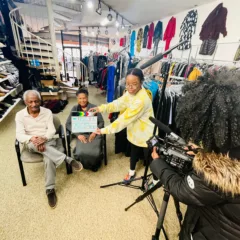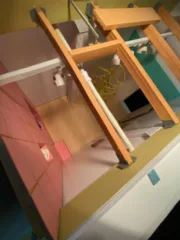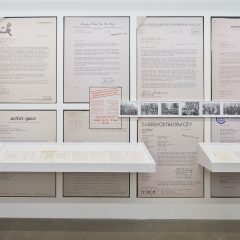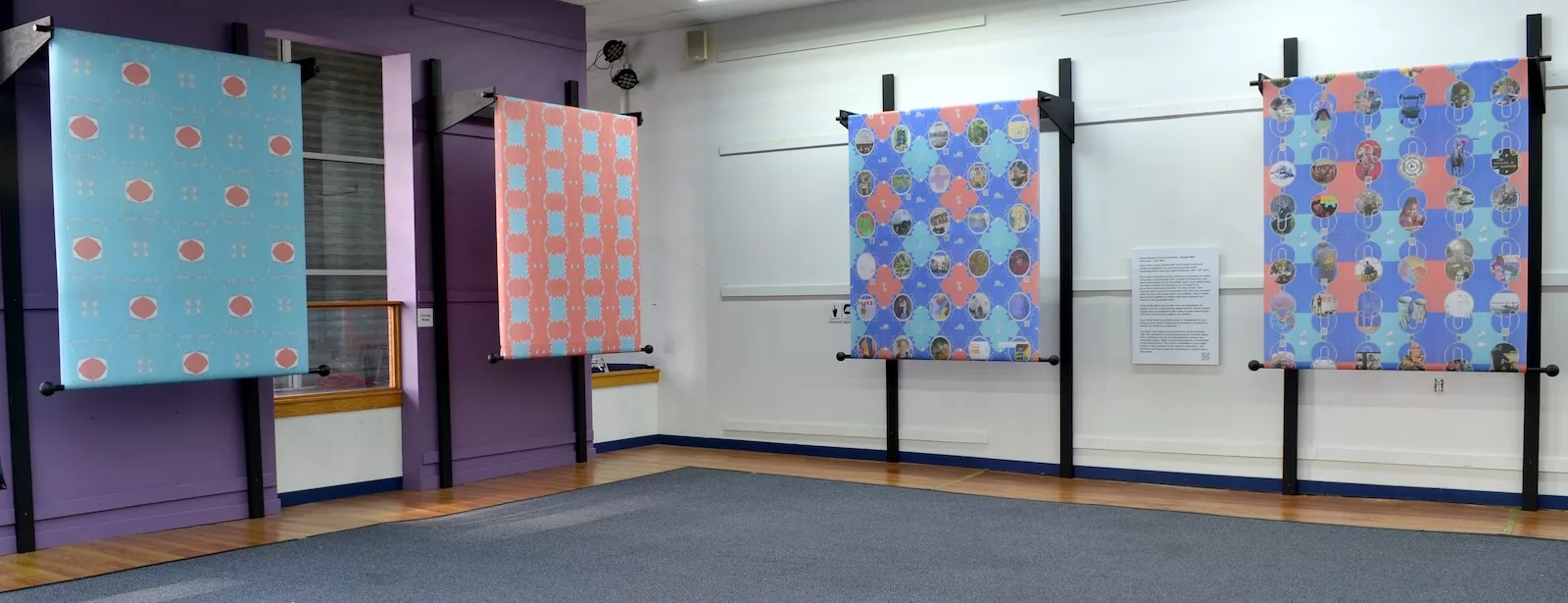
Undue Burden is a physical, digital, and participatory presentation of years’ worth of archiving by Hook&Loop Collective. The project is “created and led by Disabled, Neurodivergent, Chronically Ill, Mad, and Sick people, based in Philadelphia” and will be at Painted Bride Arts Center for the next six weeks. “Undue Burden” belongs to everyone in the Collective, and anyone who chooses to contribute to it, but began with collective members Pam Price and Shannon Brooks and has swelled to nearly 500 archive entries managed by several members of the collective.
Pam has always been kind of an archivist. Her archive was all over her home — clippings and cuttings and photos, mugs or audio cassettes on shelves, in piles, maybe in folders. It was Pam’s archiving that inspired the project. The “Undue Burden” archive, made by and about the broadly sick and disabled group of artists who formed it, records the stories, in all their complexities, of people whose experiences are often marginalized or ignored. These stories are from them, not about them. Digging into the archive is about including yourself in these stories by momentarily experiencing it through their records.
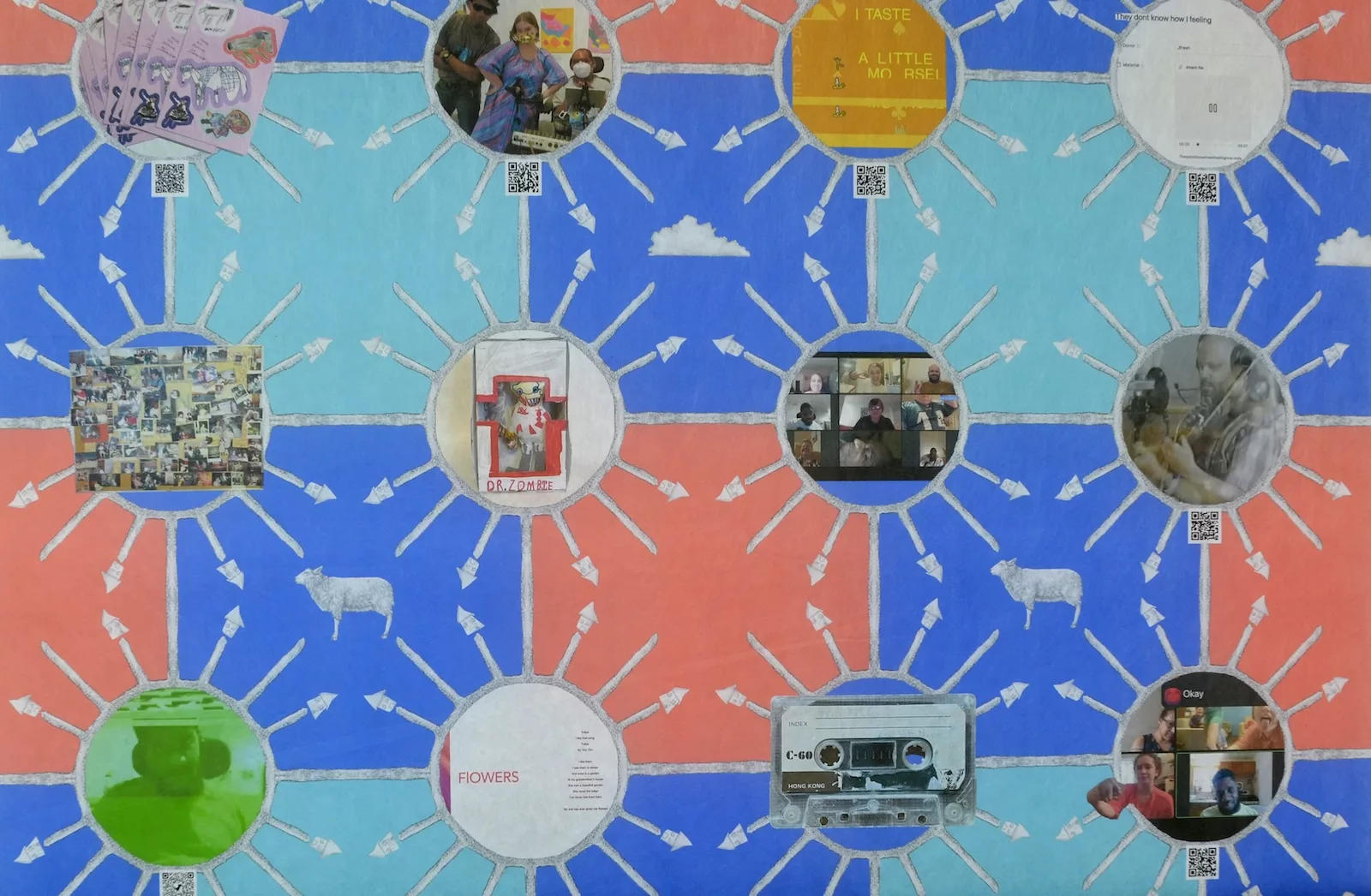
When you enter the Painted Bride space, to your left and right you will see several large, hanging fabric banners. Loops? Objects? We weren’t quite sure what to call them when I met up with collective artist Maggie Mills at the Painted Bride. The objects, designed by Maggie Mills with custom armatures fabricated by B.H Mills, are meant to be accessible — they are tactile, visual, interactive, and have audio descriptions. Viewers/touchers/listeners of the work are invited to use their hands to roll the huge fabric loops around to view or access all sides of them. On three of the seven loops are images from the “Undue Burden” archive arranged like a patterned fabric among motifs that were developed in response to the questions, “What would make the world more accessible to you? What does an accessible future look like?” Some archive images are accompanied by a QR code that can be scanned to take you directly to the digital archive where you can view the archived image and in some cases read a visual description of it; hear an audio description of the object and notes from the donor, archivist, or both. The presentation of the archive is firstly the physical archived object (wherever it may be now), which has been converted to a digital record, which is then placed on to a physical object, which directs you back to the digital archive creates a fascinating weaving in and out and in and out of the physical and digital realms.
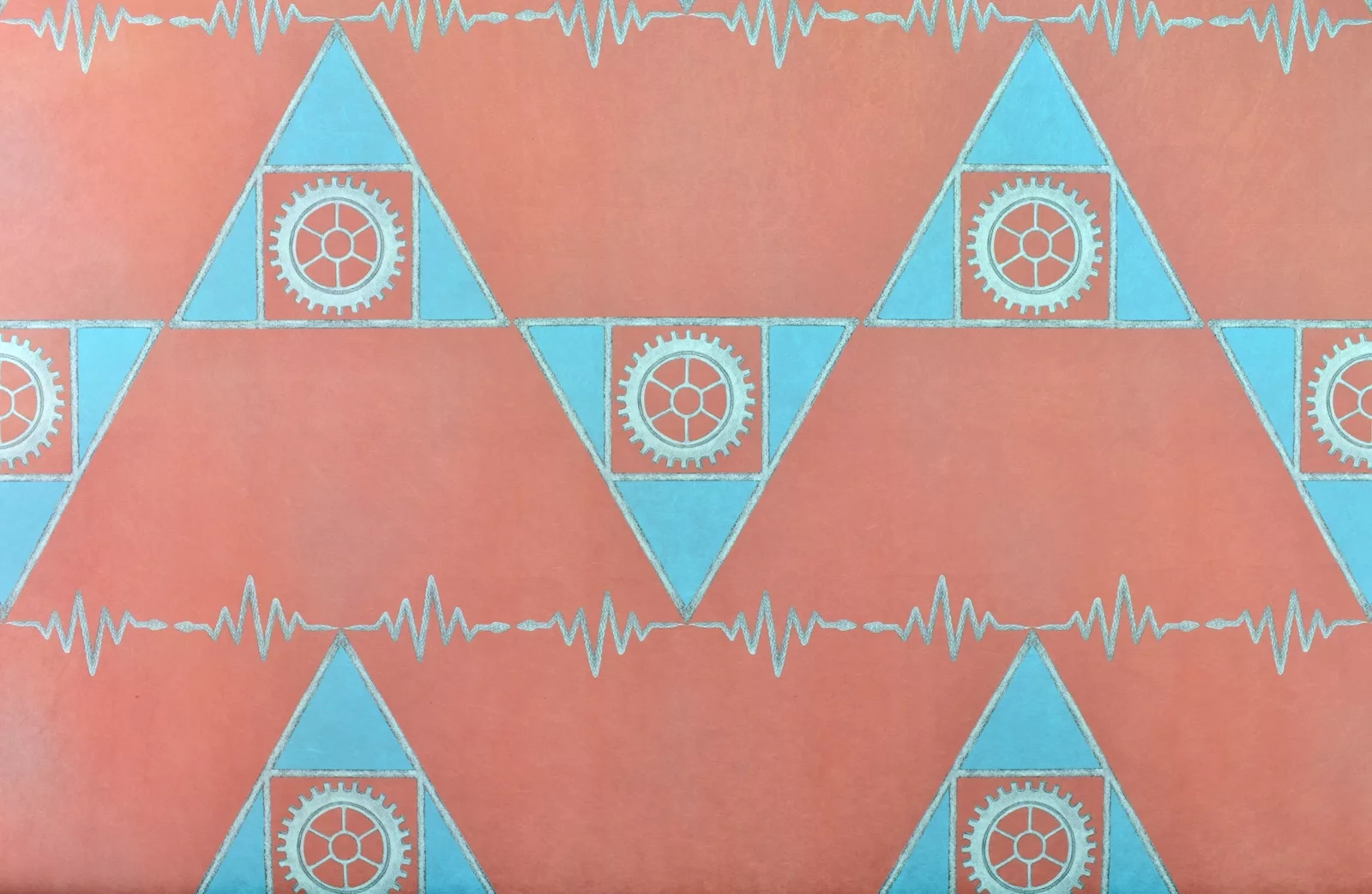
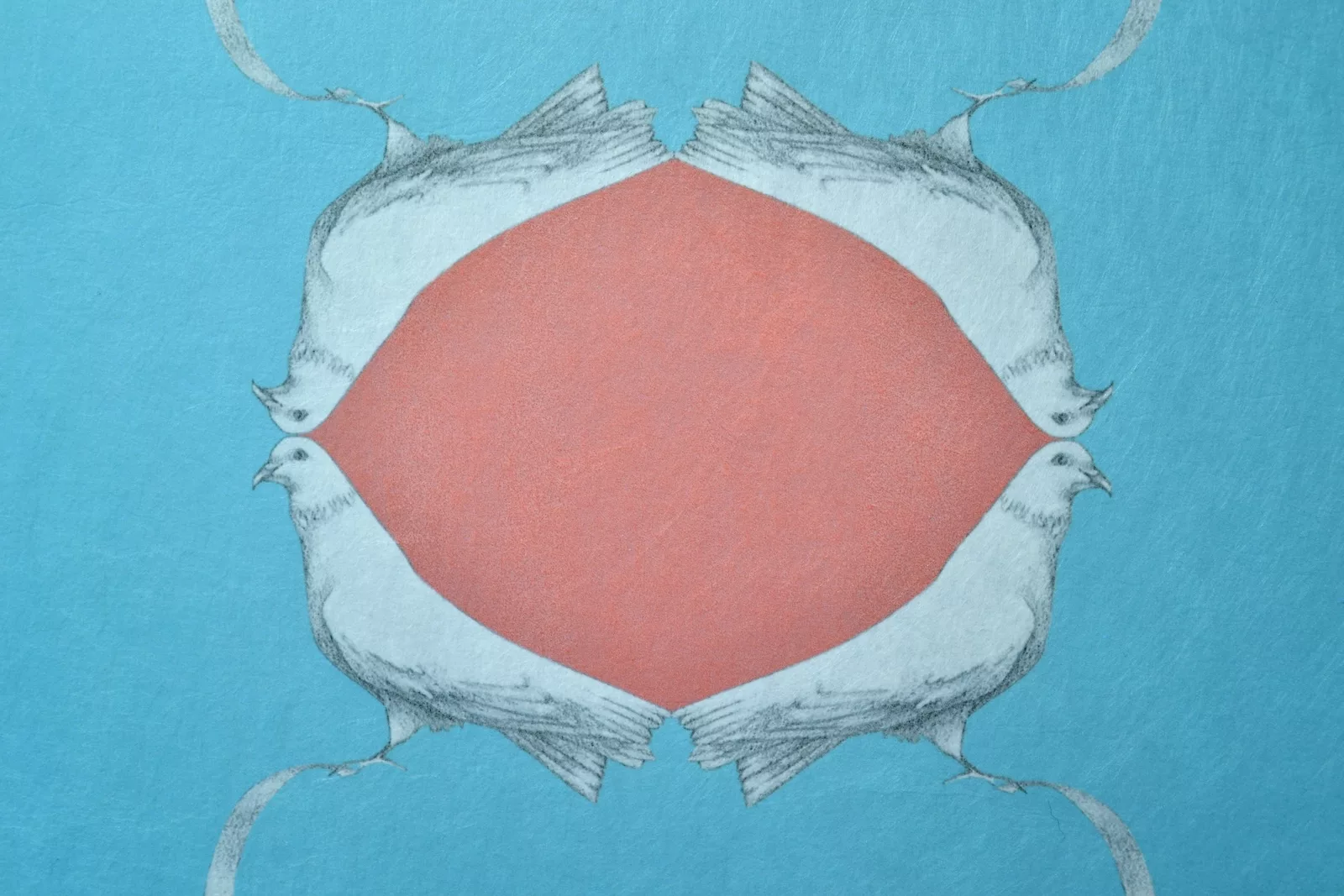
The original motifs on the other four of the fabric loops use animals, fruits, flowers and other parts of nature as symbolic answers to the same questions about accessibility that were posed to Collective members: The four living archive fabric loops featuring hand drawn motifs by Maggie Mills are waiting to be used in collaborative works at a series of multi-sensory workshops to be held at the Painted Bride during the residency. On one loop, collaborators will incorporate ribbons with words onto the fabric as part of a poetry workshop. Another is ready for an illegal wedding and a workshop on pleasure and consent.
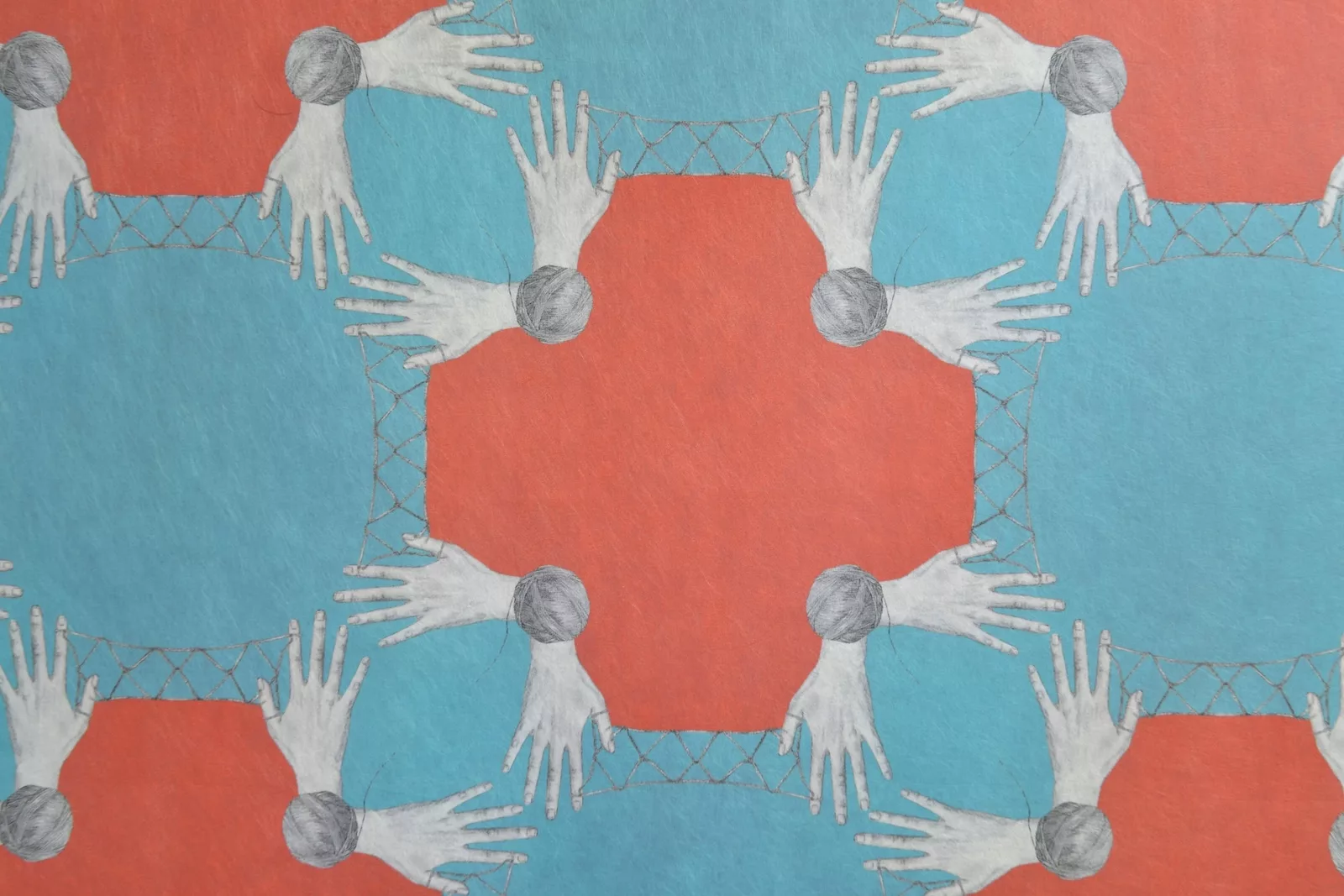
Maggie described the project more than once using the word “alchemy”. To me, it sounds a little bit like mixing up some magic, but “What does that mean to you?” I asked. She explained that the different lived experiences and the different access needs of the people in the Collective shape their collaborations. In order to meet the group’s mission for accessibility, artists may need to transform the way they conceive and create their work. The power and joy of the Collective is that they exercise a special flexibility and compromise that reflects the compassion of their community’s fluid accessibility needs. We’ve all been taught that when you go to the museum, you can look, but not touch. Artworks like paintings or sculptures are often not meant to be touched. But in order to open access to people who may not be able to enjoy an artwork by solely using their vision, for example, another dimension (or more!) must be added which fundamentally transforms the work. The collaboration instigates the transformation which is the alchemy. Even the symbolic motifs are alchemical — a combination of words and ideas that morph into a visual code. There is a sense of everything coming together – different people, different contributions, and a great variation in lived experiences –making for the best alchemy of all. all presented in this collaborative project.
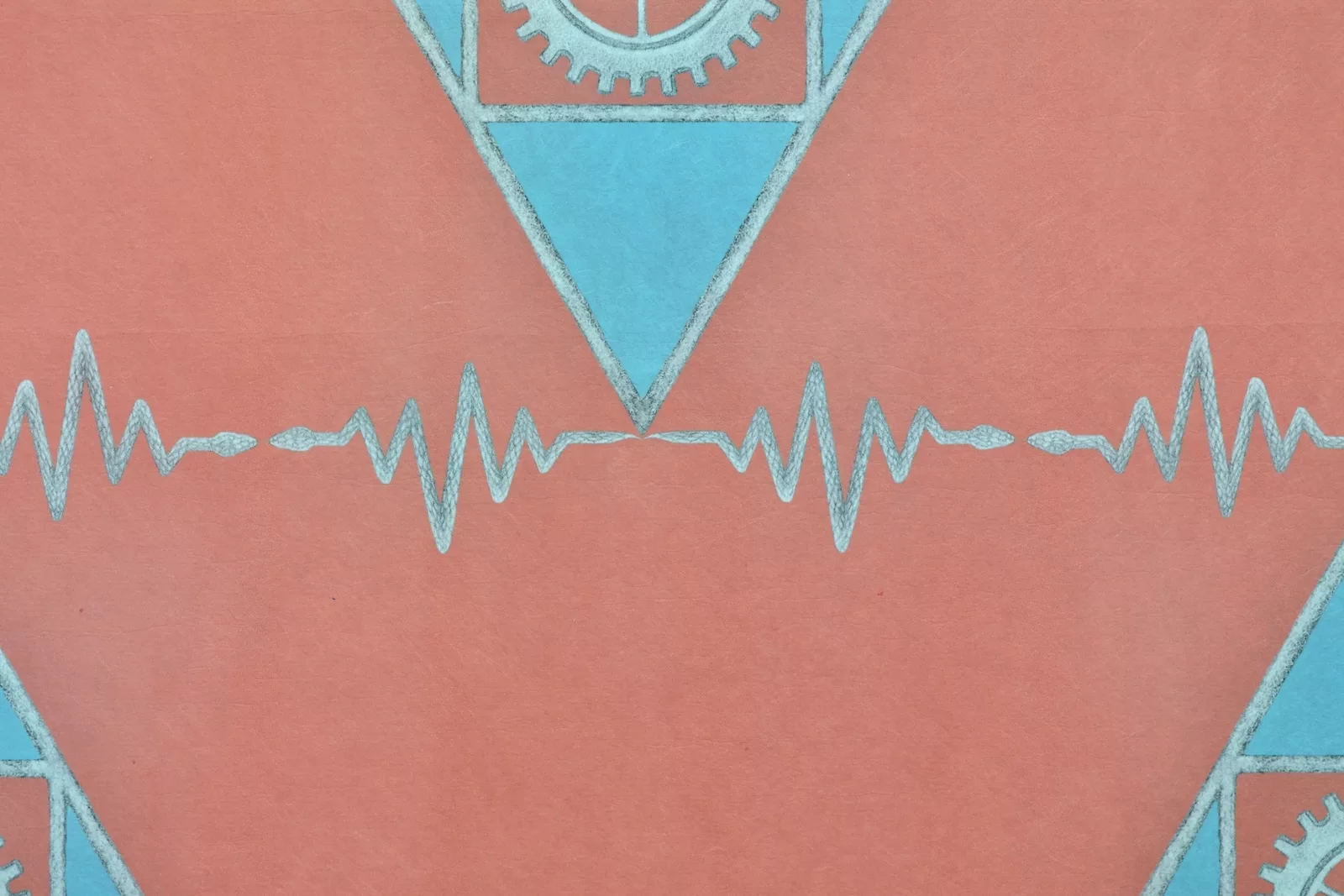
There are too many contributors to the project to properly name them all in this short write-up. But the really cool thing is that we all have the opportunity to become part of it too.
‘Undue Burden’ is on view at the Painted Bride Art Center, 5212 Market Street, from now until November 23rd. Be sure and check out their Saturday programming.
Read Roberta’s interview with Hook&Loop members in 2023.
Read more articles by Katie Dillon Low.
Listen to three 2021 Artblog podcasts about cultural accessibility.


